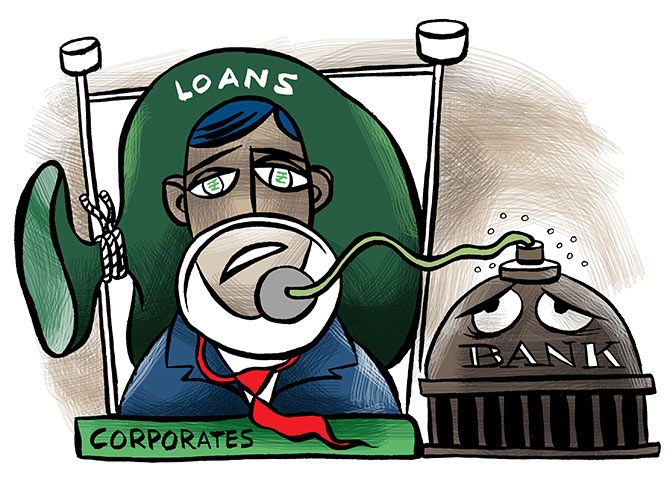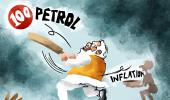Public sector banks (PSBs) have written off a massive Rs 8 trillion of loans in the seven years of the Narendra Modi government in office.

This is more than twice the capital infused by the Bharatiya Janata Party-led government during the period.
Between 2014-15 and 2020-21 (FY21), the Centre had infused Rs 3.37 trillion into PSBs.
At Rs 1.06 trillion, FY19 saw the highest capital infusion.
In FY21, it injected Rs 14,500 crore into four PSBs.
Alternatively, between 2014 and 2021, government-owned banks wrote off Rs 8.07-trillion loans.
If FY19 saw maximum loans written off at Rs 1.83 trillion, 2019-20 (FY20) was not far behind, with Rs 1.75-trillion write-off.
In the preceding fiscal year, PSBs’ non-performing assets (NPAs) came down by Rs 1.32 trillion due to loan write-offs, the Reserve Bank of India (RBI) said in response to a right to information application.
Loan write-offs were particularly high in the last four years — at over Rs 1 trillion in each of the four years.
Bad loans in the banking sector started rising from FY12, with PSBs sharing a disproportionate burden of the stress. Gross NPAs in the sector reached a peak in 2018, when they hit 11.5 per cent of gross advances.
Since then, there has been a decline in the trend. One of the reasons for the decline in bad loans is due to high loan write-offs in the past few years.
“The reduction in NPAs during the year (2019-20) was largely driven by write-offs,” observed the RBI in its annual report.
“NPAs older than four years require 100 per cent provisioning and, therefore, banks may prefer to write them off.
"In addition, banks voluntarily write off NPAs in order to clean up their balance sheets, avail of tax benefits, and optimise the use of capital. At the same time, borrowers of written-off loans remain liable for repayment,” the report said.
Even if borrowers remain liable for repayment, albeit loan write-off by banks, the data shows the reduction in NPAs by way of recovery and upgrade in a particular year was lower than the sum written off for PSBs.
The RBI data shows loans written off by private sector banks were lower than their public sector counterparts.
For example, loan write-offs by private sector lenders in FY20 was close to Rs 54,000 crore — less than one-third of PSBs.
In the four-year period between 2016-17 and FY20, government-owned banks wrote off Rs 5.7 trillion, while private sector banks’ loan write-offs were Rs 1.54 trillion.
The market share of PSBs in loans is about 60 per cent; that of private sector banks is 36 per cent.
The clean-up exercise of bank balance sheets started in 2015-16, with the RBI conducting a special inspection on bank books, popularly known as asset quality review.
The banking regulator found banks hiding bad loans by deferring asset classification.
A review of the books was undertaken and lenders were asked to classify loans of close to 200 borrowers as sub-standard.
This resulted in a surge in bad loans, thereby affecting banks’ profitability.
Consequently, the government had to soldier on with infusing capital into PSBs — mainly used for making provisions for bad loans.
Banks have to set aside capital, known as provision in banking parlance, if a loan slips into the sub-standard category.
According to bankers, bad-loan additions have fallen significantly in the past few years, given most of the stressed accounts have already been classified non-performing.
Fresh additions to NPAs were also lower since banks were reluctant to extend new loans, especially to the corporate sector.
The RBI data shows that risk averseness among bankers, coupled with a sluggish economy, resulted in a sustained decline in the share of bank credit to the industrial sector in the past seven years.
It dropped to 28.9 per cent in 2021, compared to 42.7 per cent in 2014.
Conversely, the share of loans for automobiles and housing grew from 16.2 per cent to 26.3 per cent in these seven years.











